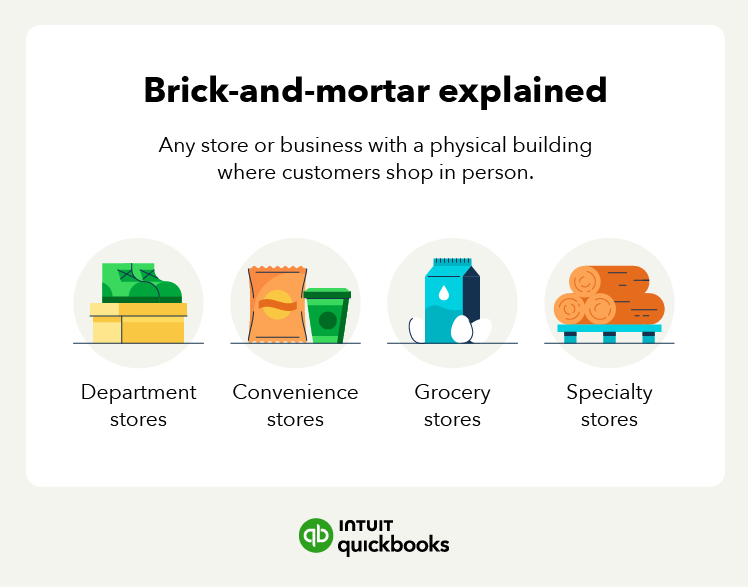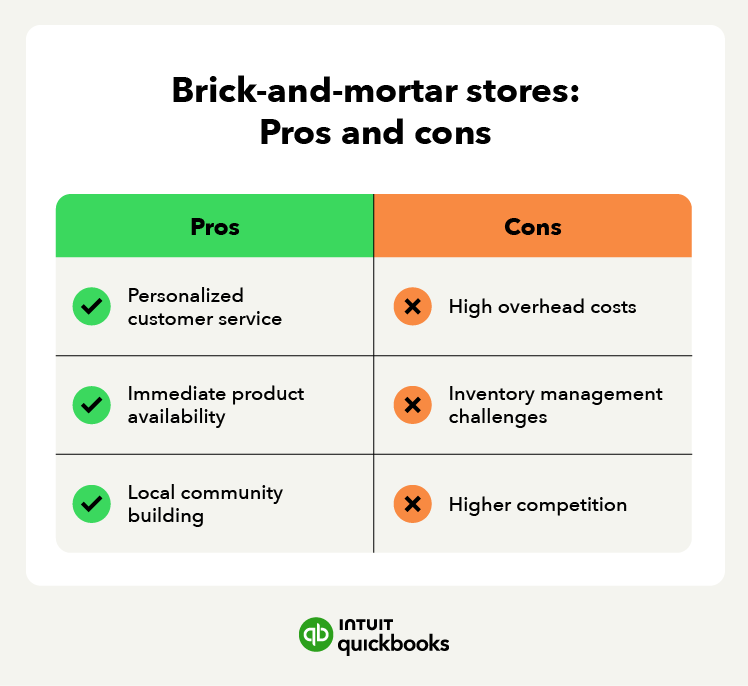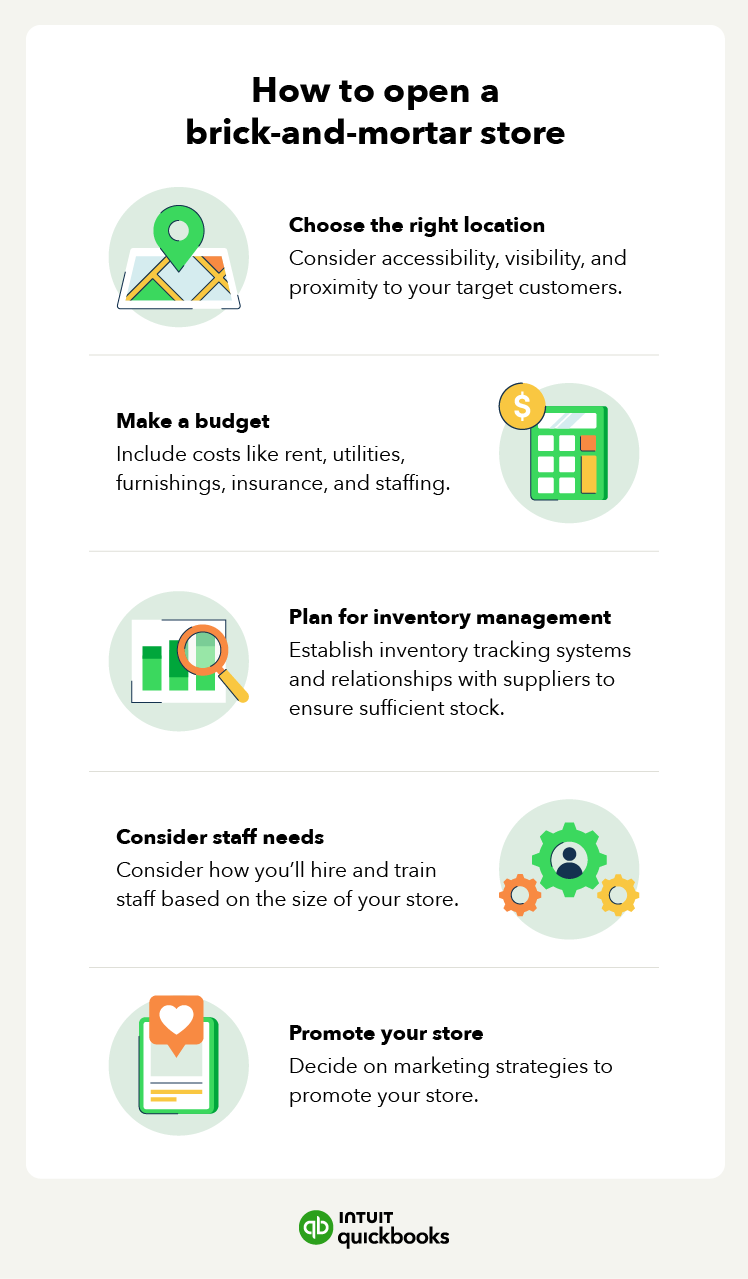The prospect of opening a brick-and-mortar store is an exciting one. Whether you’re expanding your existing e-commerce business or kicking things off from scratch, be sure to take the following factors into account to set yourself up for success.
Location
Choosing the right location for your store is crucial to its success. Think through the following factors to find the best location:
- Foot traffic
- Proximity to your target customers
- Accessibility
- Visibility
- Competition
Conduct thorough market research to find areas with high demand for your products. Be sure to think carefully about your target audience and where they spend their time to ensure your location aligns with their needs, habits, and preferences.
Financing and budgeting
Opening a brick-and-mortar store requires careful financial planning. You’ll need to assess the costs of opening your store and create a budget to support profitability.
Renting or leasing the physical space will likely be the bulk of your expenses. There are several ways you could pay for your location, including:
- Rent: Rental agreements are usually paid monthly, with short term limits (like 30 days at a time)..
- Lease: You’ll usually pay monthly, but lease agreements are longer term (usually at least one year).
- Purchase: You may pay monthly on a commercial real estate loan or mortgage to work toward owning the property.
In addition to your store location, other costs associated with moving into a physical space include:
- Utilities: This includes costs like internet access and heating/cooling.
- Furnishing and supplies: If the space doesn’t come equipped or furnished, you’ll need to invest in furniture, fixtures and equipment, and any other decor needed to complete the space.
- Amenities: Some spaces charge extra for amenities like a shared mailroom or security measures.
- Insurance: You’ll want the peace of mind of your own business liability insurance coverage. Landlords might also require it.
- Staffing: If you plan on hiring staff, you’ll need to factor in costs for their wages.
The total costs involved in opening a brick-and-mortar store will vary widely based on geographic location and the type of business. Do some research to assign estimates to each factor you’ll need to get up and running. The more realistic you are about your expected costs (and whether you can afford them), the more confident you’ll feel deciding for your business.
Inventory management
Inventory management will be top of mind for any brick-and-mortar store. This includes establishing inventory tracking systems, establishing relationships with suppliers, and logging inventory changes after a sale. You'll also need enough merchandise to meet consumer demands without over- or understocking. Consider how you’ll track and manage inventory to maintain the right balance.
If you don’t have enough room for inventory in your brick-and-mortar store, you may need to consider renting out a storage space.
Staffing and training
Part of a store’s success depends on having adequate staff to serve customers. Assess staffing needs based on the size of your store, expected traffic, and operational needs. Be sure to factor employee paychecks into your overall budget, too.
You’ll need to nail down employee job descriptions and have a plan for hiring and training processes. Create clear and comprehensive employment policies that outline job expectations, benefits, code of conduct, and grievance procedures.
As well, familiarize yourself with local and federal employment laws and regulations related to hiring, wages, working hours, overtime, breaks, and employee rights. Overall, ensure your team has the skills to provide excellent customer service, product knowledge, and support for the store.
If you’re unsure about anything, consider seeking assistance from HR consultants who specialize in labor laws and HR practices. Their expertise can help ensure your store maintains compliance with all laws and regulations while creating a positive work environment for employees.
Marketing and advertising
To create awareness for your store, you’ll need to decide which marketing and advertising strategies you’ll implement. Consider both online and offline marketing channels based on the nature of your target audience, such as:
- Social media: Platforms like Meta and TikTok can help you reach a wide audience, engage with potential customers, share store updates, run targeted ad campaigns, and more.
- Community events: Hosting or participating in local events can help you connect with your target audience in a personal way. Consider sponsoring or attending local events like festivals, store pop-ups, charity drives, or networking gatherings to increase brand visibility and build relationships in the community.
- Partnerships: Collaborating with local businesses and organizations that align with your target market or brand is a great way to cross-promote each other's offerings and expand your customer base.
Whatever marketing channels you choose, consider your target audience, budget, and resources to create a comprehensive plan for how you’ll promote your store.


















